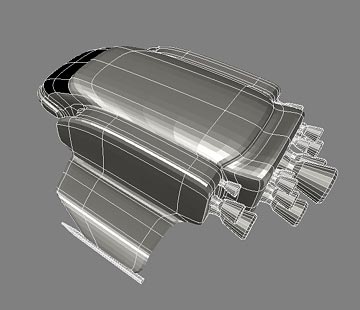[/caption]
Currently, launching 1 pound (.5 kilogram) of payload to space costs about $5,000 USD, so every little bit helps if engineers can cut down on the weight of the spacecraft. Scientists from the University of Michigan have patented their ideas for cutting down the size and weight of the thrusters used in space to maneuver and control the spacecraft. Usually these thrusters are fairly big; they can be as big as a refrigerator. But the new thrusters, called nano-thrusters, could be made into flat, low weight sheets and mounted on the sides of spacecraft. The new type of thrusters would save weight and fuel, while having a longer life as well.
Conventional ion thrusters work by accelerating gas ions to generate force in the opposite direction. But, they waste gas and are limited in lifetime because the accelerated ions damage the engine.
But, according to a report in New Scientist, the new nano-thrusters, developed by Brian Gilchrist and colleagues at the University of Michigan in Ann Arbor, US, avoid these problems.
Each consists of a small chamber of fluid with electrodes inside and a vent at the top. Above that vent more electrodes generate a powerful electric field. The fluid contains nanoparticles just tens of nanometres across that are ionized by electrodes in the chamber. Those charged ions are accelerated by the electric field and ejected from the vent, producing thrust.
These nanothrusters can be used in large numbers on flat panels. To control the spacecraft efficiently, they would probably have to cover large areas of spacecraft. But in the drag-free space environment, it be just like having a second skin on the spacecraft. And they would be much more light-weight than conventional thrusters, and would help cut the costs of launching vehicles to space.
Read the U of M’s patent here.
Source: New Scientist


( they would probably have to cover large areas of spacecraft)
Would’nt that defeat the purpose by adding more weight?
They’re probably so much simpler and lighter that a larger surface area would still end up with an overall weight reduction.
Umm… I don’t think the picture has anything to do with the content of the article.
Yeah that picture make it look like the thrusters you are talking about belong on something from a empire destroyer from Star Wars.
A further nitpick is that it isn’t clear whether the nanoparticles are actually atomized and ionized, or simply charged as-is. I’ll bet its the latter [the reference NS article costs money], because the power consumption for the former seems both excessive and prohibitive.
I should also grumble that AFAIU NS is known, in the science community, for reporting on science that isn’t quite there (i.e. sensationalism journalism) and I wouldn’t be surprised if they would do the same with technology. This doesn’t quite pass the smell test.
And just how ‘cheap’ are these fancy nanoparticles?
no wonder you guys have so many problems, a kilogram is not 2 pounds in any part of the world , a Kg is equal to 2.205 pounds. Surely accuracy is important in the space race?
@david
that cost estimation is not so accurate that including that 0.2 will make a significant difference.
Besides most people won’t be familiar with both units at the same time.
I sometimes use ‘Imperial’ (or rather american) units at work but if you ask me how long is a ft or a in I would still have to make the calculation mentally.